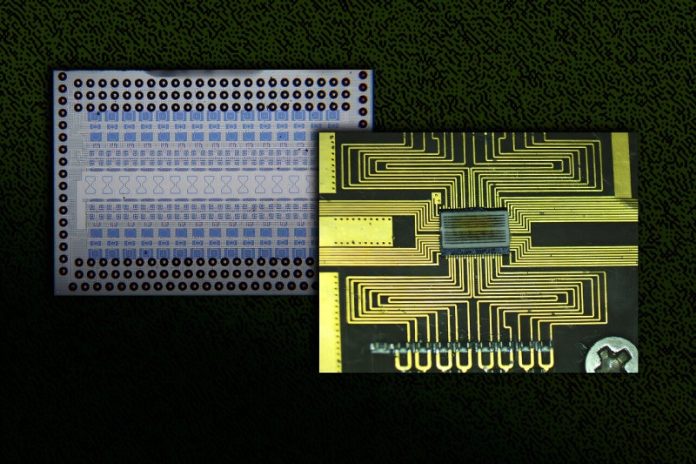
Terahertz waves, which have higher frequencies than radio waves, could revolutionize technology by enabling faster wireless communication, clearer medical imaging, and more precise radar systems.
However, generating these powerful waves on a small semiconductor chip has been extremely difficult—until now.
Researchers at MIT have developed a new chip-based system that can efficiently produce terahertz waves without the need for bulky and expensive silicon lenses.
This breakthrough could lead to more powerful and compact electronic devices.
Terahertz waves are hard to generate with enough power to be useful. Many existing methods require large silicon lenses to amplify the signal.
These lenses are often bigger than the chip itself, making it difficult to integrate terahertz wave sources into modern electronic devices.
To overcome this issue, MIT researchers created a new system that eliminates the need for these lenses. Instead, they attached a thin, specially designed material to the back of the chip, allowing terahertz waves to pass through more efficiently. This innovation, combined with high-power transistors from Intel, resulted in a much stronger terahertz signal.
The key challenge in generating terahertz waves is a property called the dielectric constant, which affects how electromagnetic waves pass through different materials.
When terahertz waves move from silicon to air, most of the signal gets reflected, reducing its strength. Normally, large lenses are used to fix this problem, but MIT’s team found a better way.
They used a technique called matching, which balances the dielectric constant between silicon and air.
To achieve this, they placed a thin sheet of material with an adjusted dielectric constant at the back of the chip. Tiny holes were precisely cut into the sheet using a laser, allowing it to transmit terahertz waves much more effectively.
Another major challenge was making this technology scalable and affordable for real-world use. The researchers used low-cost, commercially available materials to create the matching sheet. In addition, they designed their chip using advanced Intel transistors, which can handle higher power levels and generate stronger signals.
As a result, their chip produced terahertz waves with a peak radiation power of 11.1 decibel-milliwatts, outperforming existing methods. Because it can be easily manufactured, this new chip could soon be used in practical applications such as security scanners, environmental sensors, and next-generation wireless networks.
The next step for the MIT team is to build an array of these chips, creating a system that can direct and focus terahertz waves for even greater efficiency. This could lead to powerful new devices that bring terahertz technology into everyday life.
“We need terahertz sources to be scalable and affordable, and this research is a major step in that direction,” says lead researcher Jinchen Wang.
With this innovative chip, the dream of integrating terahertz waves into compact and affordable electronics may soon become a reality.



